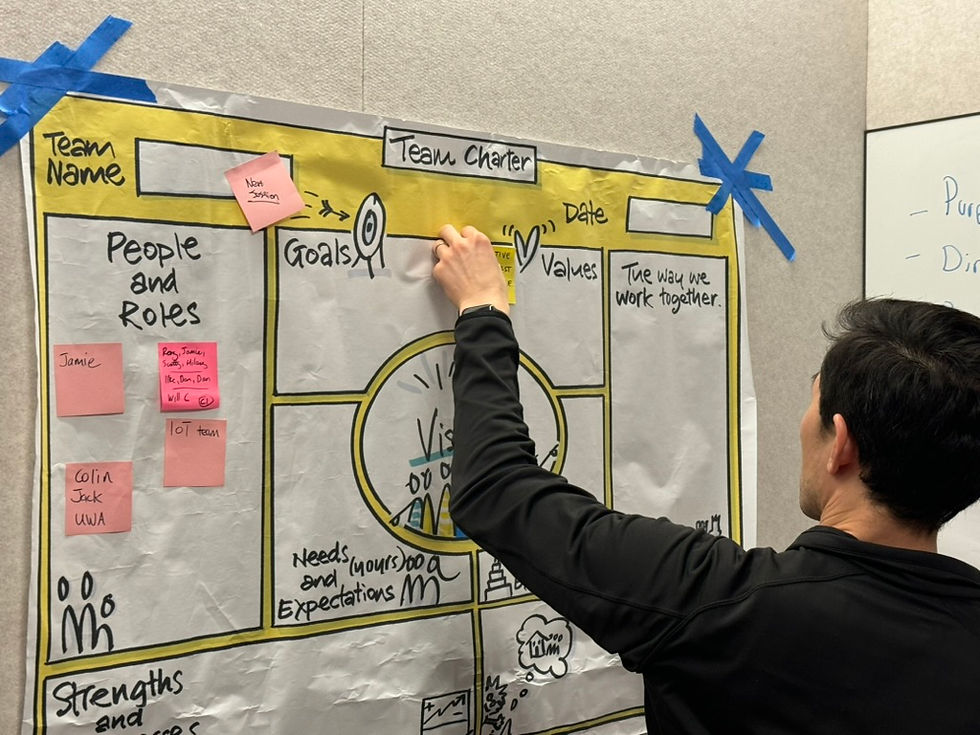
The Push and Pull of Coaching
- Marcus Ward

- Oct 17, 2021
- 4 min read
Massive thanks to the awesome @vijeshcheruvathur for a great question to kickstart @minutewithmarcus this week and one I can really relate to well.
Vijesh’s question asks “Hey Marcus, Assume you have a high performing team that no longer prefers to be coached and the scrum master is viewed as an overhead. How do you get them to perform better?”
Well Vijesh I’m going to start by congratulating you. My mantra in any coaching engagement is my biggest achievement is when we have achieved your journey and you no longer need me. In fact it becomes part of my coaching agreement up front to identify a definition of done for an individual or team. As a good coach this should be one of your most important goals and when that time comes you should feel pleased to have seen team and individual growth and be excited to begin the next journey with an individual or team that needs greater help.
I’m sorry but I really struggle when I see the “hangers on”. Those that have come in might have made an initial early difference through a pushed outcome but have stopped focusing on what the the team needs and instead relentlessly push them into practices that don’t add any more value. I saw a classic example of this the other day as I observed a team in their daily stand up. They achieved their outcome and in great time with clear actions but got blasted by their “long standing scrum master” for not following the three questions as per the latest scrum guide… it’s behaviours like this that just don’t feel very agile to me.
So this leads me to a very important point and something I learned from the wolf of Wall Street mr Jordan Belfort. You can’t make someone buy your pen! Equally you can’t make a team high performing they have to want it and they have to see you as the person who can help yo get them there. You need to understand their needs through asking questions and revealing information that helps them on their journey so when they do ask you for help your are there ready with that pen.
This is so relatable to what we do as good coaches, if we walk around pushing our own pen or agenda “getting teams to do what we say” it’s likely we’re going to be on struggle street. However if we can focus on helping the team see where they might improve and they are pulling on you to help support them the road to high performance is that much stronger.
Consider this next time you’re with the team. Even though we might see higher performance they may not see it yet so for us to push an agenda when they believe they are high performing will not help us.
I can definitely empathise with the situation of a team feeling that they are beyond the coach. Only a few months ago I helped a team with our quick start approach, along with some incredible personalities and accelerating through the storming phase the team were really achieving amazing things. Like you Vijesh I saw an opportunity that this team could go further but they were happy with where they were at. I was given the opportunity to run a “how might we” design session with them so we experimented and we went through a 3 step process
We engaged our users - what was their feedback so far and what would make our delivery “even better if” this surfaced some great points around time from request to delivery and also quality of deliverables.
We engaged the team through a team retrospective. We removed the focus on day to day and looked for opportunities we could get better and who could help us. The team were keen to find ways to improve decision making that would directly contribute to user feedback on time taken for deliverables
We identified a “North Star” I presented some case studies, one particular from Google with the concept of “optimisation” this final step really opened a door! As you’ll see below
I love the idea of optimisation. This is not saying “hey team this is broken”or “let’s start again” but what can we do to optimise or continuously improve. In the case of Google if they hadn’t optimised we might still be using a 10 year old search engine but there are always at least 1% gains we can make.
To achieve this I think it’s important we have good metrics. I’ve mentioned two previously around customer and employee but also looking at lead and cycle times
helps us see those small opportunities for improvement.
Finally if you’ve been given the opportunity to run the above with the team it’s then with them to “ask for help”. If the team can see you as a coach can help them with the next step of high performance then let the next next step of the journey begin! An equally great next step might be for you to introduce them to someone else to take them forward. This happened for me earlier in the year when working with the team although we had achieved a lot it was recognised the team needed help from someone more technically and operationally focused. I took the view of servant leadership and introduced them to someone I believe would help them with the next step. The funny thing is every time I’ve recognised the team is self organising and it’s time to step away fate has provided another opportunity which is often more challenging or exciting so sometimes we just have to follow the flow and listen to the team.
I really hope this helps answer your question Vijesh and given you some ideas for future. If anyone reading has enjoyed this blog and would like to read more feel free to connect on LinkedIn or drop me an email at marcus.ward@twenty2collective.com



Comments